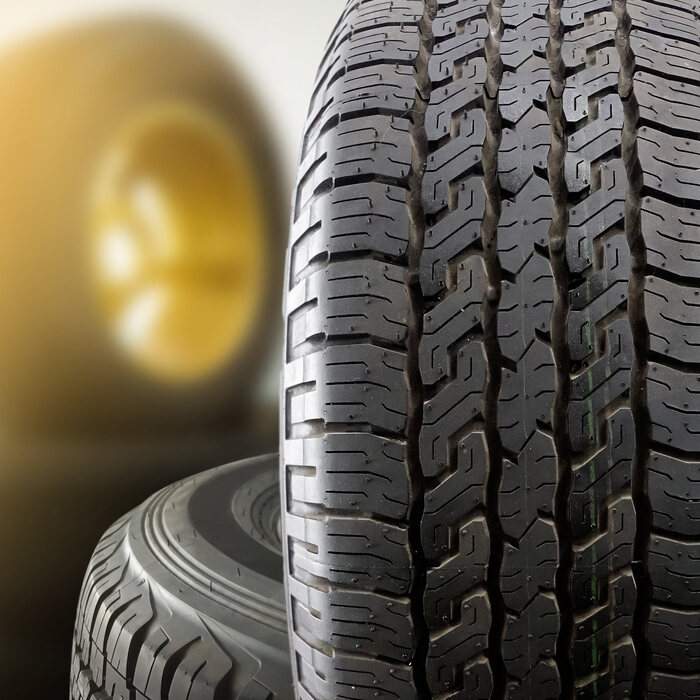DIFFERENCE BETWEEN SUMMER AND WINTER TYRES
Many people are unaware that they’re not getting the best performance out of their car because they’re not sure of the differences between summer and winter tyres, or when is the right time to switch between the two.
They’re also unaware of the costs they could be incurring by using the wrong tyres for the current season.
There’s an inaccurate perception that winter tyres are wrapped in chains and designed purely for deep snowy conditions, however there are many differences that mean changing your tyres for each season is the best way to drive safely and efficiently.
What are summer tyres?
You won’t be shocked to read that summer tyres are tyres specifically designed to be used on your car during the summer months. Or, more specifically, during months of the year where the temperature is likely to be consistently higher than seven degrees celsius - approximately March to November.
Summer tyres are made from a hard rubber compound that grips the road during warm conditions - either wet or dry - to ensure maximum traction, braking performance, and handling. Subsequently, this means better fuel consumption, costing you less and having less of an impact on the environment.
When driving, your tyres will naturally heat up, and the harder rubber compound used in summer tyres is less likely to seize up and crack. As it heats, the hard compound softens, which allows the tyre to grip the road effectively.
Another common misconception regarding summer tyres is around their performance in wet conditions. As long as the temperature is warmer than seven degrees celsius, summer tyres are the safest tyres you can use on wet roads. They’re also the best tyres to use to prevent aquaplaning in the event of surface water.
What are winter tyres?
Winter tyres are specifically designed for cold temperatures and driving in snow and ice. The rubber compound is softer than that in summer tyres, giving them better grip on cold roads and in icy conditions. Winter tyres are intended for use in temperatures below seven degrees celsius
Winter tyres have deeper, much more prominent treads, with a large number of sipes (the small grooves on the surface of the tread) that allow for maximum traction, gripping snow and ice, which allows for better handling, performance, and fuel consumption.
During periods of snow, the deep grooves in winter tyres encourage snow to compact tightly between the treads, and that compacted snow also provides additional grip on the road.
The key differences
The difference between winter and summer tyres are predominantly their rubber compound, the structure, and the treads (including sipes).
Summer tyres are much firmer than their winter counterparts, and the treads aren’t as deep or prominent. Summer tyres have a much more streamlined appearance, whereas winter tyres are more on the chunky side.
Appearances aside, how each seasonal tyre handles the roads is the key difference. To recap, summer tyres grip warm roads whether they’re wet or dry, and are used in temperatures exceeding seven degrees celsius. Winter tyres offer the best grip on cold roads, as well as snowy and icy conditions. Winter tyres are most effective when the temperature is below seven degrees celsius.
The advantages of using seasonal tyres
The biggest and most obvious advantage to using the appropriate seasonal tyres for the time of year, is you’ll get the best possible performance out of your vehicle, including the shortest braking distances, handling, and responsiveness. You’re also far more likely to avoid aquaplaning if you’re using the right seasonal tyres, so the safety advantages are clear.
Long-term, changing to summer tyres in summer and winter tyres in winter is likely to save you money. While initially there will be the cost involved in buying each set of seasonal tyres, over time you’ll see the benefits, with less friction and a smoother ride leading to improved fuel consumption and slower wear. That means longer periods of time between having to buy replacements.
Can you use summer tyres in winter and winter tyres in summer?
The simple answer is yes, however it is heavily advised that you shouldn’t. Both summer and winter tyres are specifically designed to be used during the extreme temperatures and conditions associated with each season, which means you can severely impact your vehicle’s performance if you use seasonal tyres year round.
The dangers of using the wrong seasonal tyres
Because they’re intended for use in colder temperatures, winter tyres can become overly soft when used during the summer, which can quickly wear the tread and impact braking distances. There’s also an increased risk of aquaplaning when using winter tyres in warm, dry conditions.
Summer tyres don’t have the same traction on snow and ice that winter tyres do, so using summer tyres during the winter risks slipping or skidding. The car will also take further to brake, so there’s an increased risk of accidents. When used in the winter, summer tyres are prone to seizing up and can crack, due to their harder compound. Cracked tyres will cause your car to fail it’s MOT.
What about all-season tyres?
A common middle ground is all-season tyres, which perform better than summer tyres used in winter, and winter tyres used in summer. However, during extreme weather conditions associated with each season, seasonal tyres are always recommended.
Buy new seasonal tyres online
Using summer and winter tyres is the safest and most cost-effective way to get the best performance out of your vehicle. Check out our simple-to-use tool for more information on buying tyres online



 Same Day Fitting. Order By 10:30am
Same Day Fitting. Order By 10:30am
 38 Nationwide Fitting Centres
38 Nationwide Fitting Centres
 5 Year Warranty On All Tyres
5 Year Warranty On All Tyres
 Price Check Promise. Always Great Deals
Price Check Promise. Always Great Deals

 Find a Centre
Find a Centre

